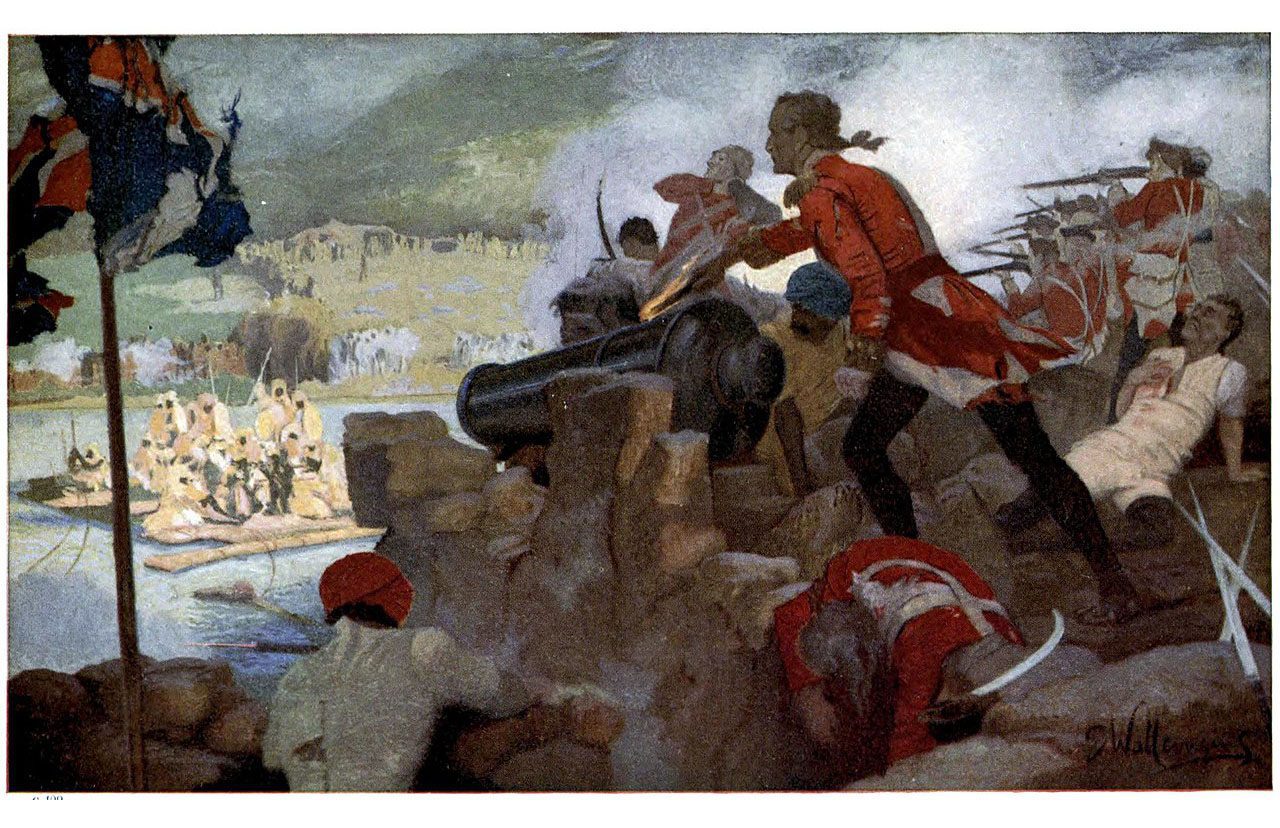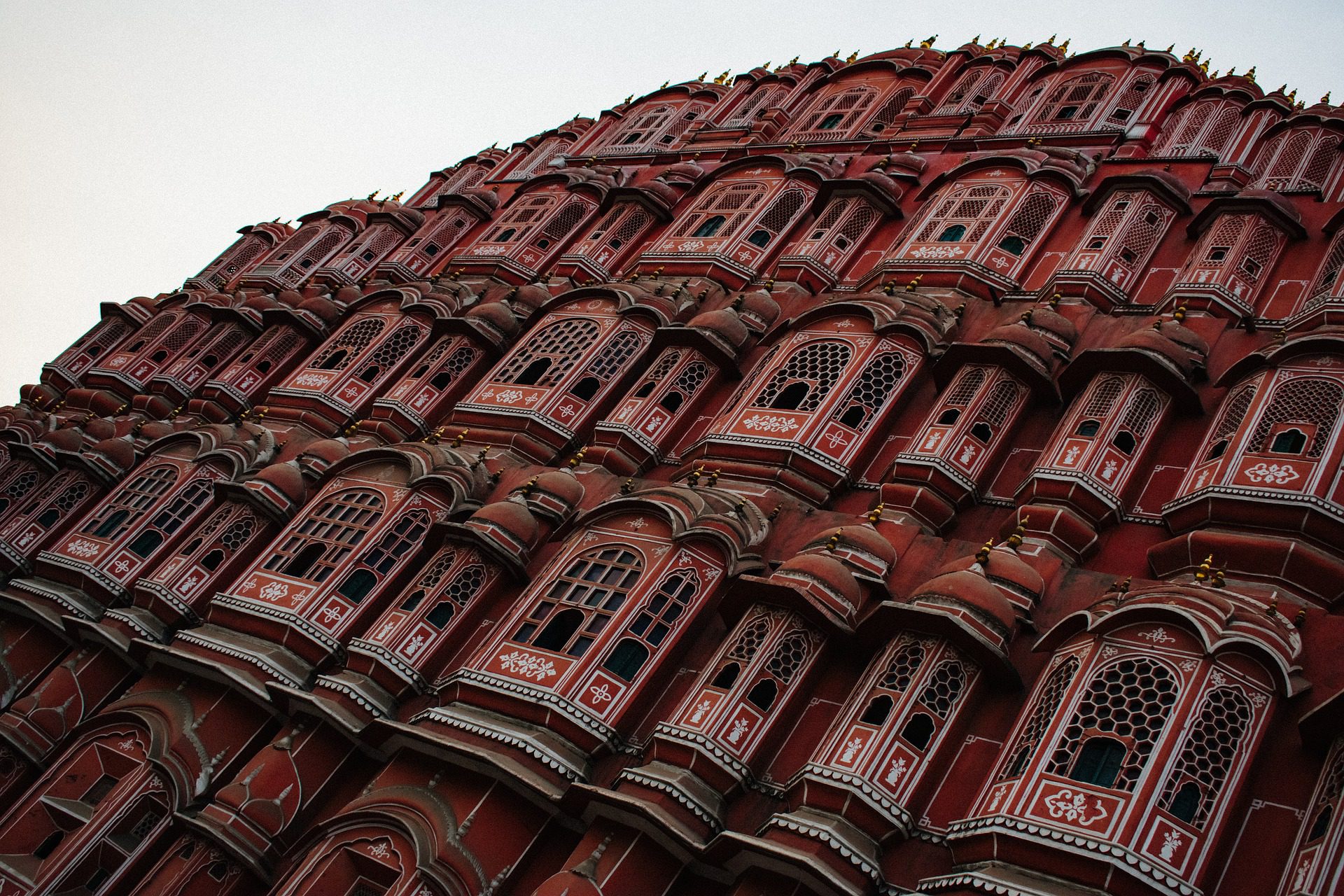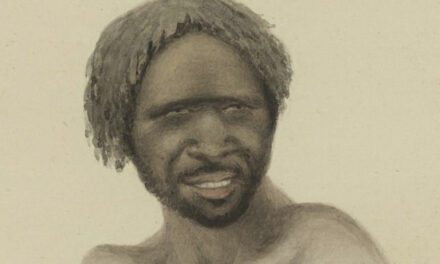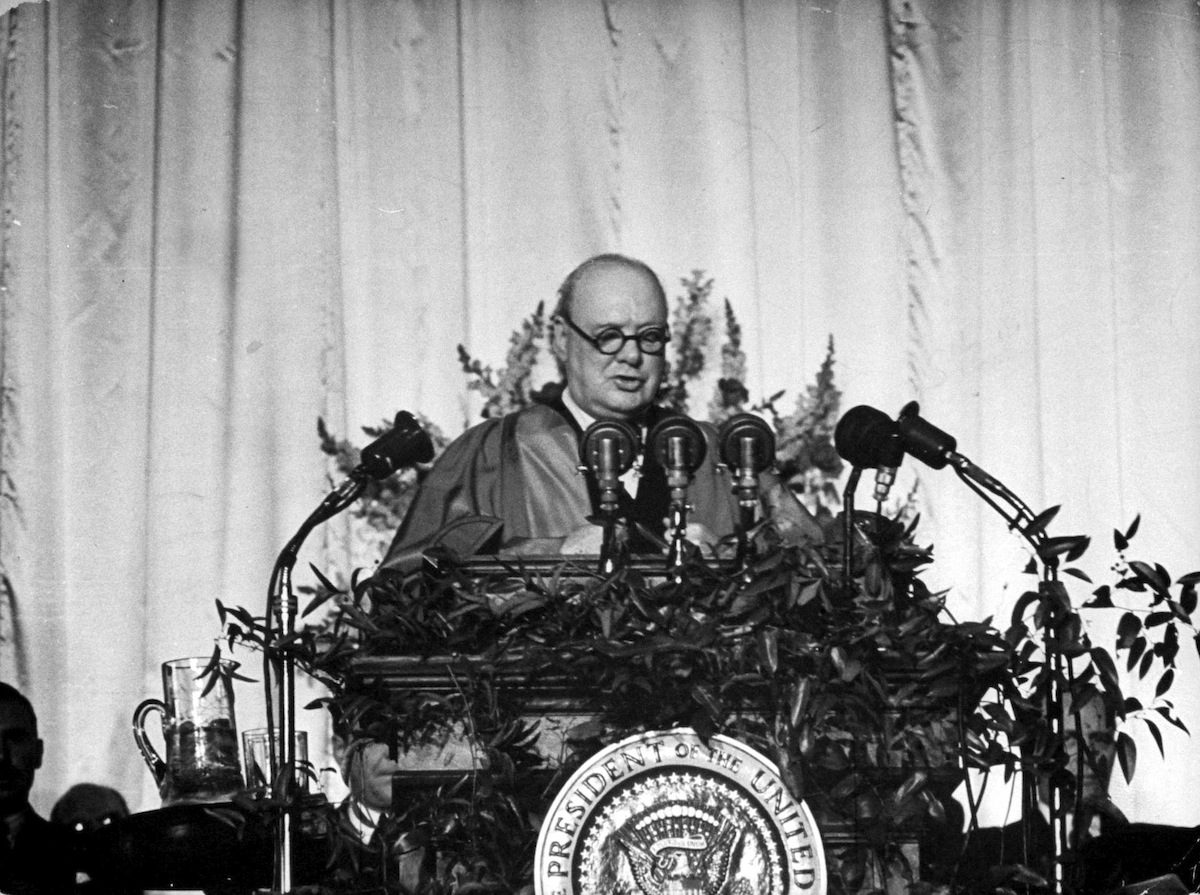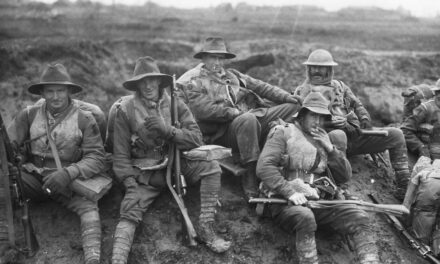Estimated reading time: 11 minutes
Robert Clive, a general of the East India Company, was despised by his contemporaries – so why was a statue of him erected outside the foreign office by the Edwardians years later?
By Dr Suki Haider.
In 2020, there were petitions to remove Clive of India’s statue from outside the Foreign Office in London. Leading historians view Robert Clive as unworthy of celebration since his reputation falls far short of the values demanded of public office and because his administrative failures led to the catastrophic Bengal famine of 1769–1773. He has been described as the ‘worst corporate figure in British history’. The counterargument is that removing statues erases history and Clive deserves to be valorised as the military hero who defeated India’s Mughal rulers, established the supremacy of the East India Company (EIC) and laid the foundation for the British empire in India. This article will outline the opposing accounts of Clive’s reputation, prioritising analysis by recent historians, and it will explain why his statue was erected when his contemporaries had condemned him.
The EIC and General Governor Robert Clive
The EIC established the foundations for the British rule of India. At its height, it ruled a territory larger than Britain and was involved in global trade, politics, war and the transportation of slaves. The EIC began as a trading company; granted a trade monopoly by the English crown in 1600. It possessed its own private army, which it used to wage war to support its aim – to generate profits for its shareholders in London. The victory of Robert Clive at the Battle of Plassey, in 1757, enabled the EIC, the most ‘advanced capitalist organisation in the world’, to control Bengal, the wealthiest region in the world. Bengal’s wealth was on account of the gold and diamonds of its Mughal princes and the European demand for its textiles, which were of unrivalled beauty and delicacy.The victory of Robert Clive at the Battle of Plassey, in 1757, enabled the EIC, the most ‘advanced capitalist organisation in the world’, to control Bengal, the wealthiest region in the world.The EIC paid its employees little more than domestic servants in England, but in Bengal they could make a fortune in months, although the risk of death from disease and the jungle was high. As an incentive to join, the company allowed its employees to engage in private trade. Consequently, bribery, corruption and the exploitation of EIC-administered lands was the norm. General Robert Clive was the EIC’s governor, ruling over the regions of today’s Bihar, West Bengal, Orissa, Jharkhand and Bangladesh.
When Clive had first arrived in India, in 1744, he was impoverished by debt. Thanks to Bengal, he became the richest self-made man in Europe, estimated to be worth over £100 million in today’s money. The treasures he brought back from India can be seen in Powis Castle, the Clive family home, now held by the National Trust. Clive’s enormous wealth attracted envy among England’s aristocracy, and some historians have argued that the attacks on his reputation as governor were motivated by jealousy. However, recent historians believe that much of the condemnation reflected genuine and warranted outrage at his administration of Bengal.
Was Clive’s failure as governor of Bengal the cause of famine?
Historians do not dispute that Robert Clive was a talented soldier and general. In 1757, William Pitt, the British Prime Minister, described him as a ‘heaven-born general’ in recognition of his military success at Plassey. Nor do historians dispute that Clive’s victories, against the Mughals, marked the beginning of British rule in India. However, historians differ in their view of Clive’s role in the Bengal famine and in their assessment of the EIC.Historians William Dalrymple and Jon Wilson, in their recent accounts, argue that the Bengal famine was caused by exploitation, mismanagement and EIC greed under Clive’s leadership.Many historical accounts have disassociated Clive entirely from the famine and the deaths of between 10–20% of Bengal’s population, estimated at 10–20 million people. In sharp contrast, historians William Dalrymple and Jon Wilson, in their recent accounts, argue that the Bengal famine was caused by exploitation, mismanagement and EIC greed under Clive’s leadership. Assessing Clive’s contribution requires an understanding of the causes of famine.
Today, scholars agree that the extent of a famine and the number of people who starve to death is determined by human action. The Bengal famine started after crops failure in the EIC-ruled regions due to the failure of the monsoon in 1769, after only light rain the previous year. There had been bad harvests in 1737–8 without famine, indeed there had not been a similar event since the Mughal conquest of Bengal two hundred years earlier.
The severity of the famine can be attributed to Clive’s actions in the period before the drought. He ordered soldiers into the countryside to exact payment of the EIC’s exploitative taxes. He allowed EIC men to ruthlessly plunder villages and towns and did nothing to stop his staff destroying the businesses of Indian merchants for their own gain. In its drive to make money, as one EIC officer wrote on returning to England:
‘half the great cities of an opulent kingdom were rendered desolate; the most fertile fields in the world laid waste; and five millions of harmless and industrious people were either expelled or destroyed’ (in Dalrymple).
Contemporary Indian witnesses similarly described the rapid impoverishment of Bengal.
Recent historians also attribute the famine to Clive’s governorship as he had destroyed the governmental institutions that would have prevented a humanitarian disaster. Mughal rulers, who were sensitive to the needs of their subjects, had ensured that the grain stores were full in case of crop failure. Their authority had been displaced by the EIC and, due to the single motivation of the British to make money in Bengal, no lasting partnerships were established to support the welfare of the population.
The historians that disassociate Clive from the Bengal famine focus instead on his attempts, between 1765 and 1767, to improve the discipline of EIC employees. Recent interpretation of the evidence, however, is that while Governor Clive attempted to make it more difficult for company men to engage in private trade, they continued to make personal fortunes for another twenty years and Clive’s own profits, and those of his favourites, remained unchecked.
Clive returned to England in 1767, buying a parliamentary seat with the aim of becoming a national statesman. This was not to be. By 1768 he was a symbol of private greed and would have lost the seat had he not outmanoeuvred the winner on appeal. The Bengal famine began the following year.The historical evidence shows that even though EIC officials knew families were starving, some of its officers engaged in the hoarding and profiteering of grain, pushing the price of food higher, for their personal profit.Clive had left Bengal without effective government, without a functioning economy and without grain reserves. There is no indication that Clive used his influence in London to persuade the EIC directors to establish soup kitchens or work programmes for famine victims. In fact, the EIC’s policies made the famine more devastating, since when the rains failed, it increased its taxes.
Under the Mughals, during famine years taxes had been reduced or waived, grain had been given to the poor and money lent to farmers so they could replace their lost crops. The EIC, in contrast, acted against the welfare of its new Indian subjects. It used violence to enforce the collection of taxes and erected gallows as a stark warning to families of what would happen if they refused to pay. Without money, Bengalis could not purchase the only food that was available. The historical evidence shows that even though EIC officials knew families were starving, some of its officers engaged in the hoarding and profiteering of grain, pushing the price of food higher, for their personal profit.
While millions starved in India, the EIC’s wealth increased. EIC employees amassed huge fortunes. The equivalent of £100m was transferred to London in 1770–71. At the peak of the famine, such were its profits that the EIC shareholders passed a resolution to increase their dividend from 10% to 12.5%.
By early 1772, the public were beginning to understand what lay behind the EIC’s vast profits and they demanded parliament to intervene. London’s newspapers and pamphlets reported that Indians lay dead and dying in the streets and fields. In the published testimonies of EIC men who had worked in India, a direct connection was made between Clive’s governorship and the famine.
Was Clive’s conduct at odds with the values of his age?
In December 1772, the government began examining the affairs of the EIC. It found evidence of widespread and large-scale company greed and corruption in Bengal. It was also revealed how the EIC had bribed MPs and ministers at Westminster to pass legislation favourable to the company using their vast Indian fortunes. As for Clive, he was vilified for failing to meet the standards expected of a governor. The satirists referred to him as ‘Lord Vulture’ and ‘The Madras Tyrant’. Clive was not the last EIC Bengal governor accused of corruption who would be cleared by parliament. Clive made a powerful defence of his actions in a speech to parliament. He took no responsibility for the famine and railed that given the quantities of gold and jewels available to him, he was ‘astonished’ by his ‘own moderation’. In 1773, Clive was cleared by a parliamentary vote (95 to 155), on account of the ‘great and meritorial services to his country’. Perhaps this was inevitable given a quarter of MPs had significant investments in the EIC, many EIC executives were parliamentarians and Britain’s economy depended on India. Clive was not the last EIC Bengal governor accused of corruption who would be cleared by parliament.
Two years after the government’s enquiry into the EIC’s affairs, Clive died, aged 49. As a youth, he had twice attempted suicide and he had suffered poor health in adulthood. On leaving no suicide note, his contemporaries commonly interpreted his death as the result of a guilty conscience. In the public imagination, Clive had remained ‘The Madras Tyrant’ and the symbol of EIC corruption.

Etching satirizing Robert Clive, 1772 National Army Museum Collection.
Why is there a statue celebrating Robert Clive outside the Foreign Office?
It was not Robert Clive’s contemporaries, or the Victorians, who erected the statue in London. Indeed, Victorian governments were embarrassed by the exploitation that Clive and the EIC represented. It was the Edwardians who erected the statue, to celebrate Clive’s achievements, over one hundred years after his death.As the power of the empire was starting to wane, and nervousness about working-class loyalty was on the rise, the Edwardians used imperial propaganda to create a sense of nationalist pride.The period around 1890 to 1914 saw several statues erected to imperialists, including Bristol’s Edward Colston (1895) and Oriel College’s Cecil Rhodes in Oxford (1910). By then, British imperialists had lost their swagger abroad and were nervous of the threat posed by industrialised Germany (the Anglo-German naval race had begun). Britain’s rulers were worried that her sickly troops, stunted by the impact of urban poverty, might not be up to the task of defending the empire. They were also anxious about their loyalty. Working-class identity was on the rise with the growth of the Labour Party, militant trade unionism and growing industrial unrest. The empire meant little to the poor. A contemporary view was that the sun might never set on the empire, but it never rose over Britain’s slums. As the power of the empire was starting to wane, and nervousness about working-class loyalty was on the rise, the Edwardians used imperial propaganda to create a sense of nationalist pride.
The campaign for a national memorial to Robert Clive was the idea of the ex-Viceroy to India, Lord Curzon. But Curzon’s campaign did not have the government’s backing. The Secretary of State wanted a statue of Garibaldi (a freedom fighter in the unification of Italy). Nor was fundraising for the Clive statue supported by the general public. The funds were raised by Curzon himself (who believed that the British empire was ‘the greatest instrument for good the world had seen’) and by several retired and disgruntled ex-India officials, and from individuals with relations loosely connected to Clive.
The statue was erected in 1912 and moved to its current position in 1916. Empire Day was officially recognised as a state holiday the same year. Processions of school children dressed-up as imperialist heroes, including Clive of India, were cheered by the crowds. Clive, who had been satirized as Lord Vulture during his lifetime had become a celebrated representative of the British empire.

Clive of India’s statue outside the Foreign Office, London
MAP OF LONDON, 1843 – FRAMED PRINT
Below is a framed map of London from this era. It would make an excellent addition to the home of anyone interested in history and your purchase helps support History Guild and our work improving historical literacy.
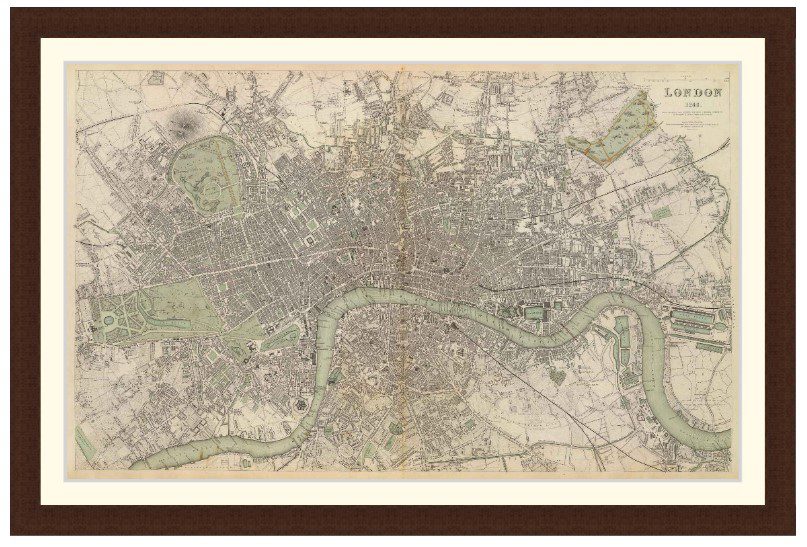
Map of London, 1843 – Framed Print
Framed Print of London. 1843. Drawn & engraved from authentic documents & personal observation by B.R. Davies, 16 George Street, Euston Square. London, published Nov. 1, 1843 under the superintendence of the Society for the Diffusion of Useful Knowledge, by Chapman & Hall, 186 Strand (1844)
Available in 3 sizes:
- Small 41.3cm x 29cm
- Medium 57.5cm x 39cm</l…
Historical interpretations change over time
It is unsurprising that historians have prioritised different aspects of Clive’s career. The study of history is marked by academic debate and as new evidence has come to light a recognition of Clive’s role in the Bengal famine has developed. Historians must wrestle with Clive’s numerous reputations: brilliant army general, corrupt company governor, fantastically wealthy MP and reckless administrator responsible for the deaths of millions of Bengalis. In their accounts of Clive and the EIC, historians also wrestle with the different interpretations of the British empire and its legacy.
What should be done with the Clive of India statue?
Should the Clive of India statue be moved to an empire museum where historical context can be provided? Or will the addition of an information board suffice to give an account of Clive’s history and the impact of the EIC on India? How we understand Britain’s imperial past impacts on prejudice and societal inequality today. The question about what to do with the statue is important because its location symbolises attitudes to the history of the British empire and its legacy.
Articles you may also like

Taking back the Homeland – Ethiopian Guerrillas in World War II
Guerrilla warfare played a huge role in World War II. Partisans in France, Yugoslavia, the Eastern Front and the Philippines have much written about them. Vitally important but lesser known were the Abyssinians (Ethiopians) fighting to eject the Italians from their country. By Ellen Rubin. Control of East Africa was essential to the Allies as […]
Originally published by The Open University, CC BY-NC-SA 4.0

